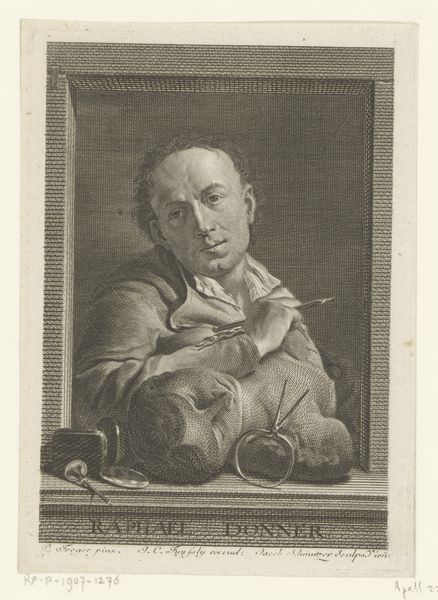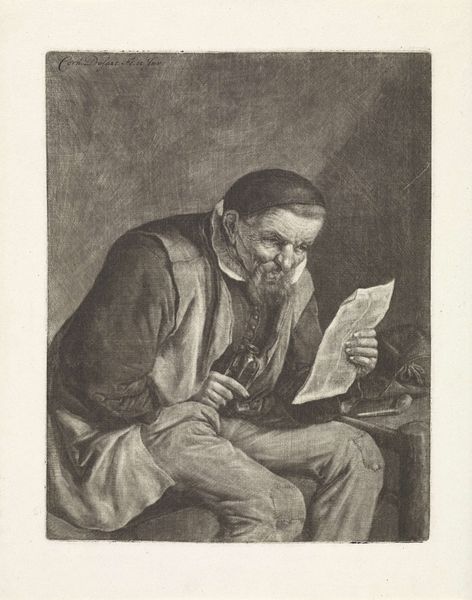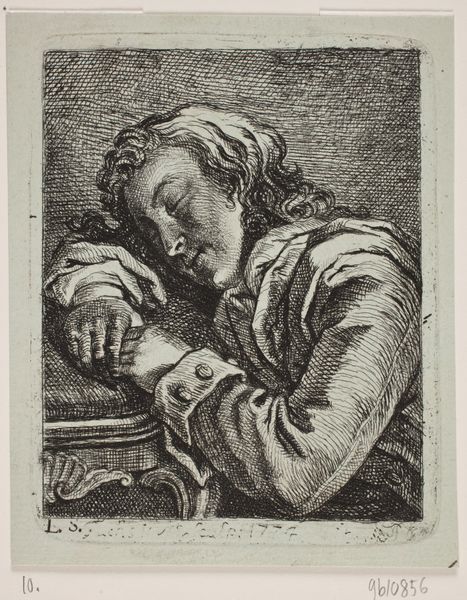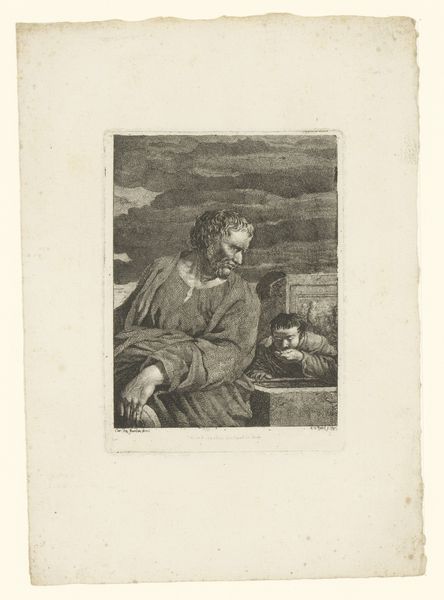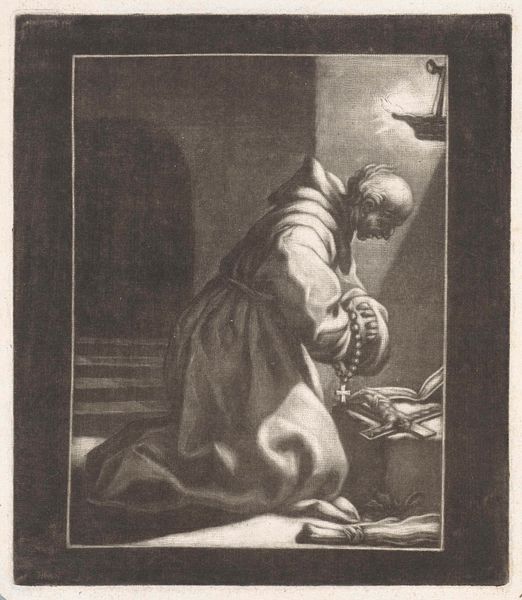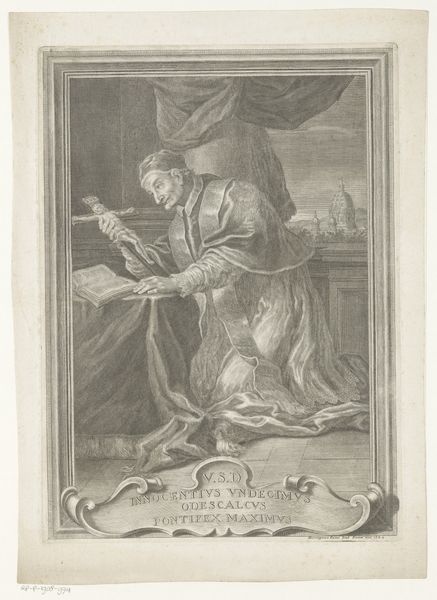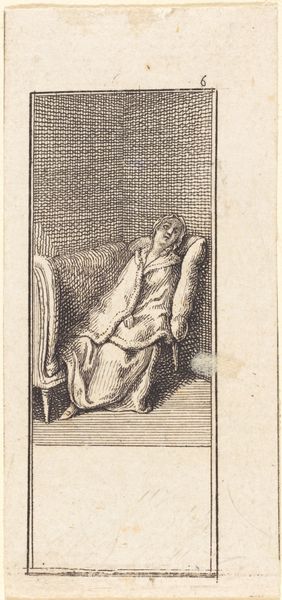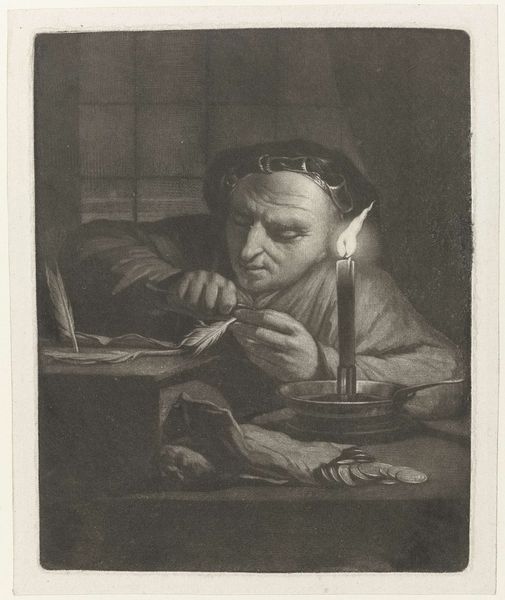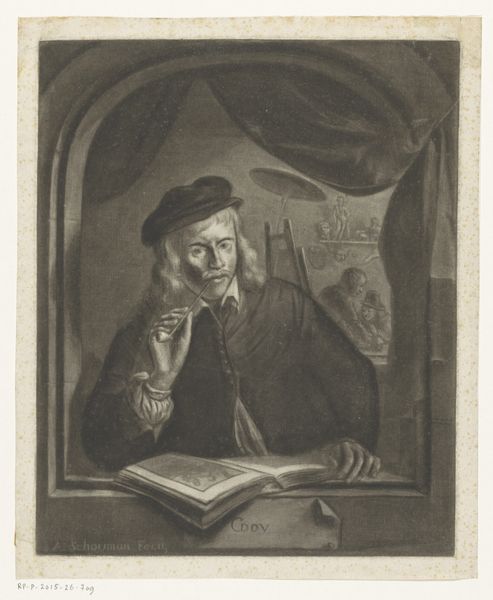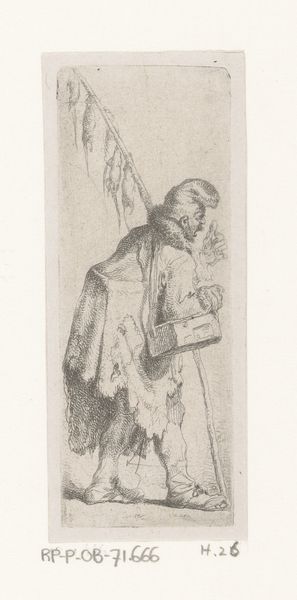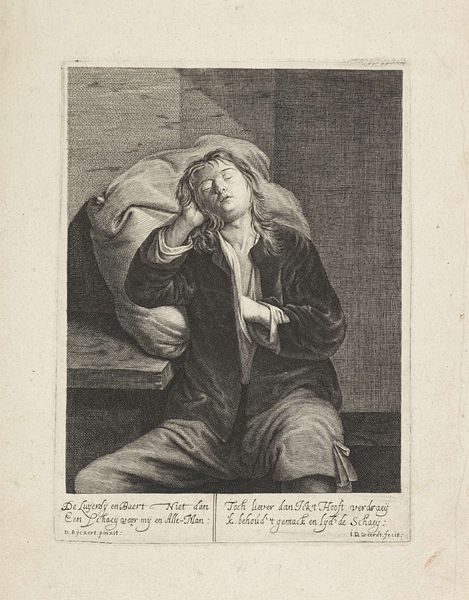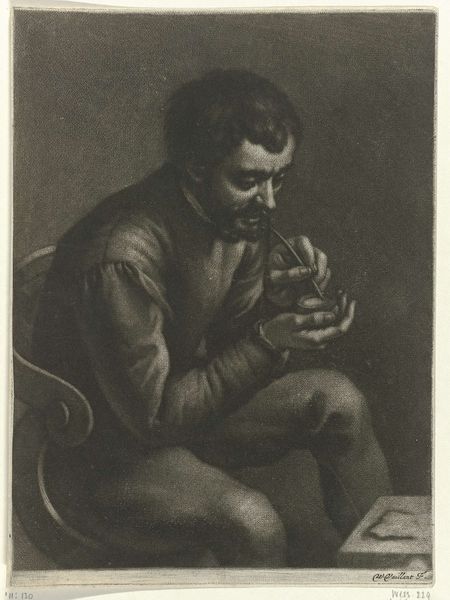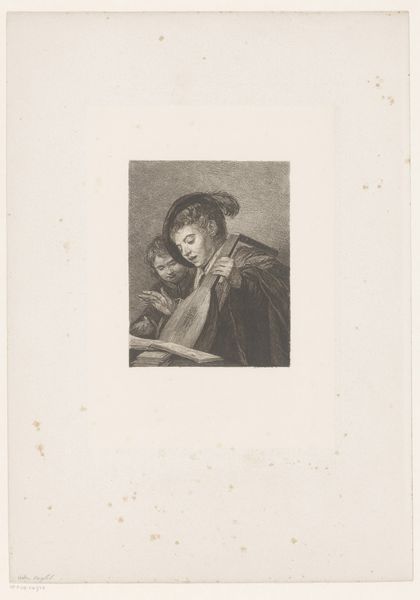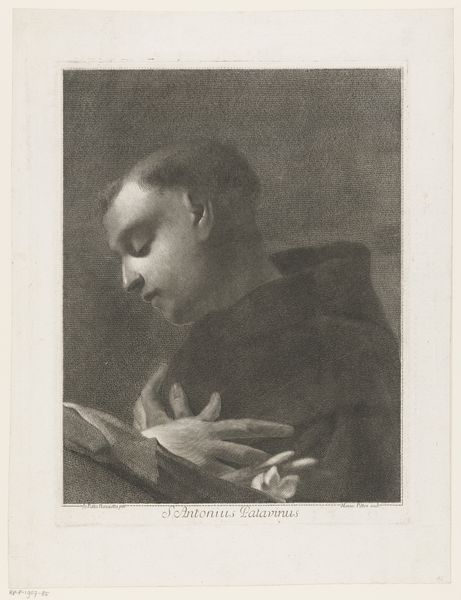
engraving
#
baroque
#
pen illustration
#
old engraving style
#
engraving
Dimensions: height 125 mm, width 71 mm
Copyright: Rijks Museum: Open Domain
Curator: This engraving, "Heilige Aloysius Gonzaga," produced by Franz Sebastian Schauer sometime between 1725 and 1774, presents Saint Aloysius Gonzaga in a deeply devotional state. Look at the delicate lines and textures achieved through the engraving process. Editor: My immediate impression is one of subdued contemplation. The monochromatic palette and fine linework lend the image a solemn, almost melancholic air. There's also this tension between earthly vanity shown in the objects at his feet, and saintly contemplation conveyed by Aloysius Gonzaga's demeanor. Curator: Precisely! Consider the socio-political context in which Schauer operated, creating these engravings during a time of intense religious and political conflict. Engravings like these were commodities as well, widely circulated and consumed. How might this interplay affect our reading? Editor: Placing the artwork within the context of devotional imagery intended for wider circulation during periods of sociopolitical strife encourages questions around power, piety, and control. The image works to create a clear distinction of holiness from earthly pursuits – even objects indicating royal stature become, here, emblems of something base, of something to reject. Aloysius gave up his status as an heir to a marquisate to join the Jesuits; so we can understand why there's a royal crown near the skull and flowers. Curator: The materiality is worth noting, too. An engraving allowed for mass production and dissemination, meaning these images were available to people in ways painted commissions never were. This fact changes the art experience—a Baroque piece consumed in a radically different way by varying social classes, potentially blurring traditional notions of artist-patron relationships. Editor: Absolutely, the democratization of art through engraving meant wider audiences could interpret images according to their own beliefs, influencing and perhaps subverting the intended narrative. The composition almost asks you to see him not only as Saint Aloysius, but as the very template of what a good Catholic person can aspire to. Curator: A perfect example of how art making, its methods and materials, play an essential role in interpreting Baroque ideals. Editor: Indeed! It reframes it through accessible material formats to be reinterpreted and acted upon. I think that is particularly potent.
Comments
No comments
Be the first to comment and join the conversation on the ultimate creative platform.
